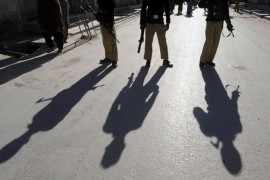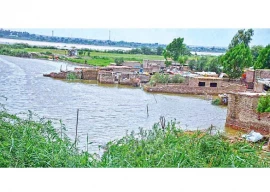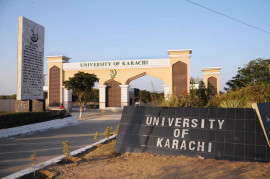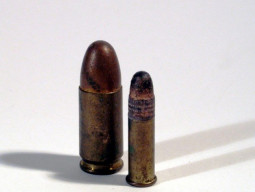
A few feet below Karachi’s surface lie sewerage pipes and just like our human gastro-intestinal tracts we can’t see them but this integral network is responsible for flushing out our system. Officials have started worrying, however, that the entire system might go down the toilet very soon as 80 per cent of the pipes are blocked.
The areas most vulnerable to a stinking mess are Gulberg, Liaquatabad, Orangi and Site towns.
A district officer (DO) in the City District Government Karachi (CDGK) told The Express Tribune that he blames the town municipal administrations for the choked-up drains.
They are dumping around 6,000 tons of garbage into them, he alleged.
It’s not as if the administrations do not have the money, said the officer. They allocate hefty budgets just to address such problems. Despite this, they continue to dump garbage into the drains. Landfill sites are only used to get rid of around 3,000 tons of waste. He claimed “this practice” started after the town administrations were placed under administrators.
He said that the CDGK claimed it started cleaning the drains in April 2007 and had managed to remove 60 million cubic feet of silt from the key drains. The silt was then moved to landfill sites.
The municipal services department told The Express Tribune that it had only been working at a quarter of its capacity. One of the many reasons for its low efficiency is that the diesel supply for the department’s machinery, has been halved from 4,500 litres to 2,000 litres per day.The department confirmed that around 80 per cent of the drains were clogged because of garbage dumping or encroachments.
The CDGK also admitted, in its Disaster Control Plan 2011, that most drains have been encroached on and are choked with silt and garbage because of which their water carrying capacity is at “the minimum level”. The DO said that they have started cleaning the drains. An operation started with the Manzoor Colony drain on March 1 this year, but so far, only 30 per cent of the drain has been cleaned.
Trouble in Lyari
Approximately 500 kilometres of the city’s drainage system is dependent on the Malir and Lyari rivers. The Malir river system consists of two storm water drains, the Chakora Nullah and the Thado Dam, while the Lyari river system comprises the Gujjar and Orangi storm water drains.
The Bakra Peeri (animal market) in Lyari is in serious trouble because the Lyari town municipal administration has been dumping garbage into the river from this point.
As a result, the water level has risen - and it’s not looking pretty. Levels in the drains connected to the river have also risen and the sewerage has started to push back. If the situation continues, roads and streets in Liaquatabad, Orangi, Gulberg and SITE would be flooded with sewage.
There are two natural sewage rivers, Lyari and Malir, and seven storm water drains - Macchar Colony, Nehr-e-Khayyam, Manzoor Colony, Soldier Bazaar, Pitcher, City and Railway - in the city, which directly drop into the Arabian Sea.
The CDGK had tried earlier to solve the problem by making catch-pits (a pit in a drainage system in which matter that might otherwise block a sewer is collected so that it may be removed from time to time).
The DO said even these pits are completely clogged. The works and services department had constructed catch-pits at Nagan Chowrangi at a cost of Rs150 million, on Sharae Faisal at a cost of Rs50 million, in Korangi Industrial area at Rs140 million, in Soldier Bazaar and near Frere Hall as well. However, none of them solved the problem. The CDGK was not discouraged though and it has recently asked the department to build a catch-pit in Green Town.
Published in The Express Tribune, April 13th, 2011.

















COMMENTS (3)
Comments are moderated and generally will be posted if they are on-topic and not abusive.
For more information, please see our Comments FAQ